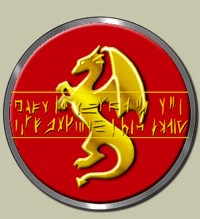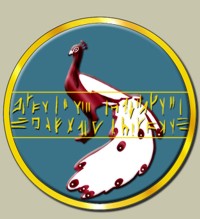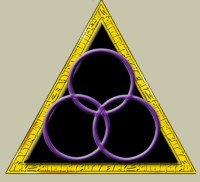|
By Loremaster Tormus Bridewain
of the Brughan
When Brughan children are small, their
parents will spin beautiful stories to amuse their children
- stories of brave Truefolk archers who ride on ponyback
and conquer all manner of evil with quick thinking and
a steady eye. There are many drawings to go with the
tales, and the small children listen with eyes and hearts
full of wonder.
But there is another tale that must be told when a
child is older, one which is told for the first time
when the growing Brughan first asks, "Where did
the ponies go?"
Then it is the sad task of the storyteller to relate
the tales of the Horse Wars, and to watch as the child
grieves or rages or sits in quiet silence and absorbs
the information. Now the child understands many of his
people's rituals for the first time, both rituals used
to honor the ponies in life, and rituals used to mourn
them.
When tears, tempest, or silence comes to an end, Brughan
children will often declare their undying hatred of
the elves for this age-old crime. Many parents will
point out that there are more elves than merely the
Ardenai, and that it is folly to treat all of a race
as if they were all of one tribe, just as it would be
foolish to treat all Truefolk as if they were Paradis.
To many children, the difference does not matter at
first, but, when they are older, they often ask how
they may recognize the different groups of elves.
The parent responds to the child, "There are four
ways to recognize an Ardenai, or any other elf. You
will know an elf's culture by his appearance, his attitudes,
his family, and his crest."
Here are the crests of the Elven Houses, described
and depicted so that none will remain in ignorance.
Whether an elf is friend or foe, accursed or honored,
let him be known and recognized for what he is.
When the elves display their crests, the crests are
always round and set inside a circle. Sometimes, particularly
in ancient records, the circles are broken into five
or seven parts across the top, but the bottom is always
solid.
These crests will be most often encountered, as they
belong to five active, living houses:
| House Ardenai: |
|
a green oak leaf on a field of brown |
| House Illistim: |
|
a peacock on a field of sapphire |
| House Loenthra: |
|
a silver harp on a field of amethyst |
| House Nalfein: |
|
an onyx rose on a field of jade |
| House Vaalor: |
|
a golden wyvern on a field of crimson |
The Ardenai are never to be trusted or believed, unless
a single elf shows himself to be unlike his kin. The
Vaalorians are impassive- neither hostile nor friendly-
but they are best avoided, for they are fully devoted
to their city and their people, and they care nothing
for anything outside its walls. The Nalfein are like
poisoned honey wine, with a dagger always waiting beneath
the surface of impeccable politeness, and a Nalfein's
words must always be ignored in order to watch his actions
for the truth.
While the betrayals in history show any elf must earn
a Truefolk's trust, the Loenthra have a keen ear for
song and a good eye for color, and the Illistim are
always curious to hear another tale. Members of these
two Houses are more friendly and reliable than any other.
The following crests are less common, but adventurous
Truefolk may still encounter them.
| House Ashrim: |
|
an aquamarine wavecrest on a field of white |
| Even if the House is dead, some elves
still display the Ashrim crest for the memory of
their kin. Those few who remain who call themselves
pure-blooded Ashrim are lost souls... no true family,
no living heritage, and no real hope. |
| |
|
|
| Ancient House Faendryl: |
|
a grey tower on a field of scarlet |
| This crest was displayed by the House
before the battle of Maelshyve. |
| |
|
|
| Disgraced House Faendryl: |
|
a fallen black keep on a field of scarlet |
| The other elves officially changed
the Faendryl crest to this image after the battle
of Maelshyve, though the Faendryl didn't like it
much. Most images of the former crest were replaced
with this image. |
| |
|
|
| Modern House Faendryl: |
|
a scarlet pentacle on a field of grey |
| The pentacle is a symbol of demon-summoning.
After coming out of Rhoska-Tor, the dark elves embraced
the evil for which they were cast out, and they
took it as their crest as a slap at the other elves. |
| |
|
|
| The Dhe'nar |
|
|
| The Dhe'nar have their own crest,
but they don't seem to have a system of heraldry
-- or, if they do, it's written down in runes instead
of being drawn out in symbols. An enruned triangle
surrounds the Dhe'nar crest instead of the bordering
circle used by the other elves, and sometimes more
runes are set within the crest. The crest itself
is composed of three equal-sized overlapping circles,
one on top and two below. While most often shown
in violet on black, the crest can be any color on
any field, and stories still remember this crest
as a brand upon Truefolk flesh. |
These things were written by Loremaster Tormus Bridewain
of the Brughan to help educate his people.
|







|









